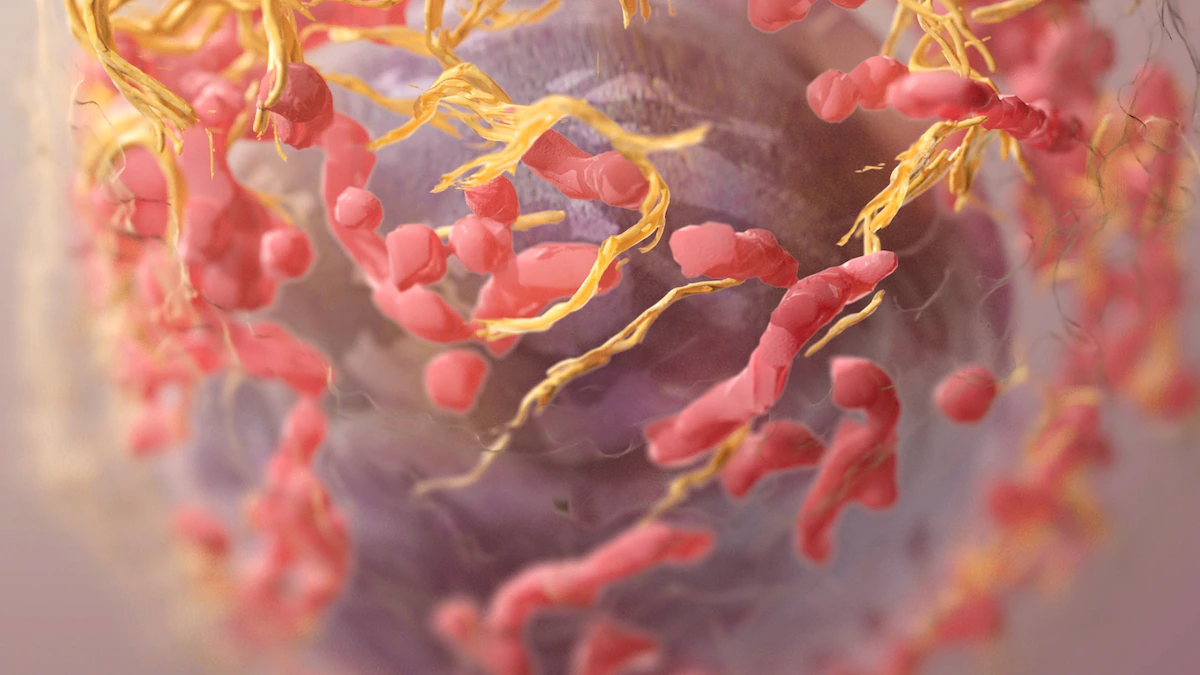Copyright National Geographic

Scientists may have found a new target to help slow the spread of cancer—a protein that can be manipulated to make cancerous cells self-destruct. Two new papers published in Nature show that researchers are homing in on ferroptosis suppressor protein 1 (FSP1), an enzyme that provides one of our body’s strongest defenses against a specific type of cell death that breaks down a cell from the inside out. Disarming this enzyme makes cells more likely to die off—and if disarmed in cancerous cells, that may stop tumors from growing so fast. The research teams, one led by Harvard University and another by New York University, found that when they blocked FSP1 in lymph nodes and lung tumors in live mice with cancer, the tumors grew at a significantly slower rate compared to controls. Understanding how to trigger this self-destruct process in cancer cells—known as ferroptosis—is one avenue researchers believe might eventually lead to new cancer treatments. (What is stage 0 cancer? Here’s what you should know about this diagnosis.) “If we are able to intervene at an early stage, the hope is that we would potentially be able to prevent cancer from spreading beyond the [initial tumor],” says Jessalyn Ubellacker, an assistant professor of molecular metabolism at Harvard University and lead author on the Harvard paper. The original cancer tumor itself is less dangerous—and far simpler to treat—than when it spreads to other vital organs. Adil Daud, director of melanoma clinical research at the University of California, San Francisco who was not involved in either study, says the lymph node study “builds a good case” about FSP1 inhibition in specific contexts, like the lymph nodes. However, mice models and mice tumors differ from how real people develop cancer. “What we don't know about this mechanism is how effective or how valid it is in human beings,” says Daud. Exclusive Holiday Gift Bundle Gift a subscription to wonder Here's what we do know. How FSP1 works in the body Cancer experts had previously researched cell death by blocking a different enzyme, glutathione peroxidase 4 (GPX4). Multiple enzymes work together to protect the cell from breaking down, but it was thought GPX4 was the cell’s “guardian” and strongest line of defense. However, Ubellacker’s previous work found that when it came to the aggressive skin cancer melanoma in lymph nodes, disarming GPX4 wasn’t sufficient to kill the melanoma. (Melanoma is overdiagnosed at ‘alarming’ rates. Here’s what to know.) Turns out, the FSP1 enzyme plays a bigger role in protecting the cells. “The lymph node environment is a very cozy, hospitable environment for melanoma cells,” Ubellacker says. In the new study, Ubellacker and her team tested what would happen if they blocked the FSP1 enzyme instead, injecting inhibitors in mice tumors for two weeks. Compared with mice receiving control treatment, tumors in mice receiving the FSP1 inhibitors were about 35 percent smaller in volume on average. Both the Harvard and New York University studies are one of the first times labs took these therapies and tested them on live mice with cancer, which is “a great leap forward,” Ubellacker says. What the lung cancer study found In the meantime, researchers at New York University’s Papagiannakopoulos (PagaG) lab had embarked on a similar study testing FSP1 inhibitors on genetically engineered mice models who had lung cancer. (There’s new guidance on lung cancer screening. Here’s who is affected.) Like the Harvard study, the research team found blocking FSP1 slowed tumor growth. After about three weeks, the average tumor volume of the control mice was more than 750 cubic millimeters, while the average tumor volume of the FSP1 inhibitor mice was less than 500 cubic millimeters. Additionally, mice who had lung cancer and were given FSP1 inhibition lived longer than controls by a few days. “It's a modest difference,” Daud says. This suggests “there [are] many other pathways that are at play here, though FSP1 is one.” Researchers also found disabling FSP1 worked in multiple types of lung cancer. Daud was impressed by this. Current therapies are often specifically targeted to one lung cancer mutation, but FSP1 inhibitors may be a more generally applicable treatment. Just as the Harvard team did, the PapaG team independently proved FSP1 is an important pathway to prevent cell death. They examined clinical data of human patients and found the enzyme was more prominent as the cancer progressed. The more FSP1 enzyme a patient had also predicted worse survival, perhaps suggesting FSP1 was indeed allowing cancer cells to survive. “I was thrilled to learn of another group seeing complementary findings in a different model,” Ubellacker says of the PapaG lab results. While still early in the research, together the papers present stronger evidence that enzyme-blocking therapies could work. What’s next This new research is only the beginning. “For that next step to happen, we need to understand which tumors and contexts would be the best to treat with these small molecule [inhibitors],” Ubellacker says. Other tumor types that may benefit still need to be explored. FSP1 inhibitors could also be a much safer option than inhibiting GPX4, as researchers have tried in the past. Existing GPX4 therapies have high toxicity, and losing GPX4 is toxic to T cells—the body’s white blood cells that fight infections and cancer—and may actually harm the immune system’s attempts to fight the cancer, the lung cancer study states. “I'm hopeful, and I anticipate that it will translate into real therapeutic benefit,” Ubellacker says.



